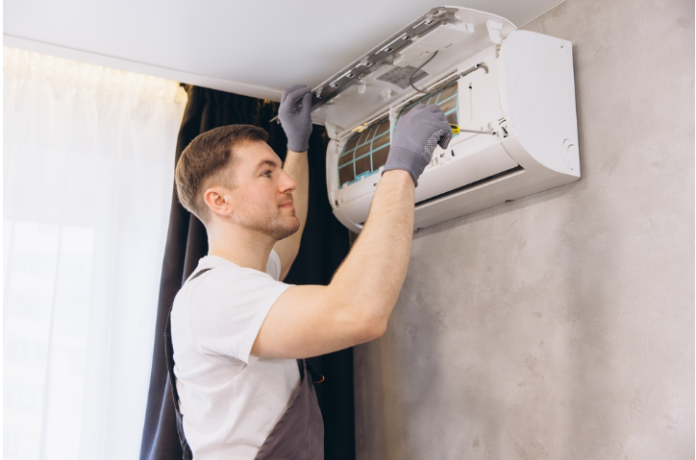If you are old enough to remember coal and oil furnaces, you might be amazed by the sheer number of HVAC options modern homeowners have to work with. And even outside the HVAC universe, there are alternative ways to heat and cool a house without a traditional furnace or air conditioner. Some of the possibilities are truly amazing.
Since most of us heat and cool with HVAC systems, let us focus on them and the different types that homeowners can choose from. There are five basic options, each one offering certain customizations that can be tailored to a property’s unique needs.
1. Split HVAC System
We start with the HVAC type that is arguably the most popular in the U.S.: the split HVAC system. This system is designed with a separate outdoor compressor and air handler. It is energy efficient, easy to access when repairs are necessary, in use widely around the country.
Outside, a large compressor sitting on top of a concrete base creates cool air during the summer months. Indoors, a furnace and air handler keep the house warm all winter long. Repairs to one are typically isolated from repairs to the other. However, some types of repairs – like thermostat and blower repairs – affect both systems.
2. Hybrid Split System
A hybrid split system is designed mainly to handle heating needs. It combines both a furnace and heat pump with an automatic switch controlling both. The hybrid split system is adaptable and can reduce winter heating costs depending on furnace fuel.
Under normal conditions, the heat pump keeps the house warm. But a sensor automatically switches the furnace on when temperatures fall below a certain point. Furnace use is limited to only those times when the heat pump cannot keep up.
3. Ductless Mini Split
The Ductless mini split system is primarily for cooling. According to the experts at Salt Lake City’s SameDay, it utilizes wall-mounted units throughout the home, units that do not require any ductwork. Rather than a centralized HVAC system, you cool on a per-room basis.
The main advantage of this sort of system is fully zoned control. The temperature in each zone of the home can be customized based on personal preference, time of day, etc. Ductless mini split systems are also pretty flexible in terms of installation locations.
4. Packaged System
A packaged system offers space saving HVAC service in smaller homes. The system offers an all-in-one heater/AC that is normally mounted on the roof of the home or along one of the sides. A packaged system is not ideal for a large home with a ton of square feet to heat and cool, but it is ideal for starter and retirement homes.
Packaged systems are also cost saving systems. They are affordable and fairly easy to maintain. For people on a budget, a packaged system is a good deal.
5. Geothermal System
Finally, a geothermal system relies on buried pipes that take heat from underground and transfer it into a home. A geothermal system is a high efficiency system with an exceptionally long lifespan. But it’s also quite expensive. Most systems are installed at the time the home is built. Attempting to install one after the fact would only add considerable expense.
Today’s homeowners have lots of choices when it comes to heating and cooling. Just in the HVAC space, there are five options. So many choices is a good thing inasmuch as it allows homeowners to choose whatever works best for them. It is a far cry from the old coal furnaces of the late 19th century.
